Name RFA Cardigan Bay Laid down 13 October 2003 Status in active service Launched 9 April 2005 Draft 5.8 m | Ordered 19 November 2001 In service 18 December 2006 Construction started 13 October 2003 Length 177 m | |
 | ||
Identification IMO number 9240782Pennant number L3009 | ||
RFA Cardigan Bay is a Bay-class landing ship dock of the Royal Fleet Auxiliary (RFA). Built by BAE Systems, the ship was dedicated into the RFA at the end of 2006.
Contents
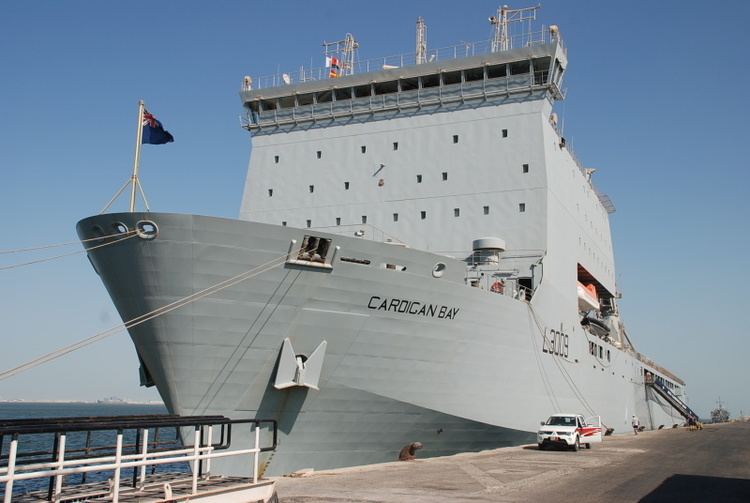
Design and construction
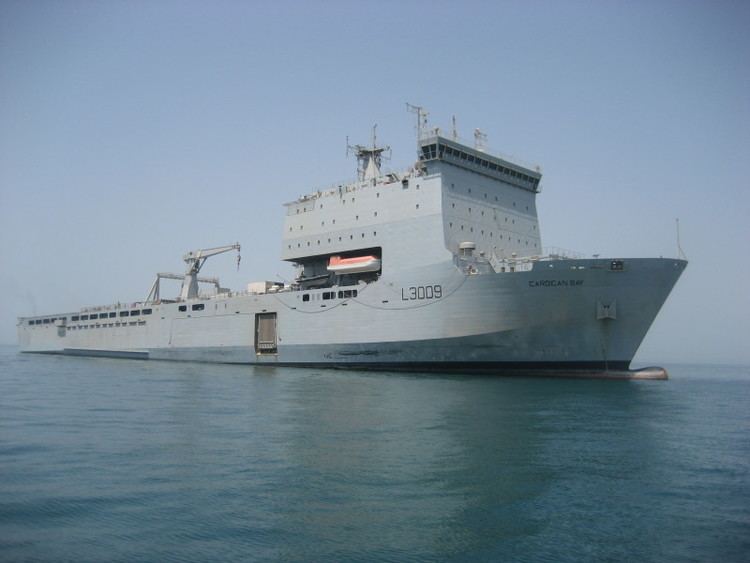
The Bay class was designed as a replacement for the Round Table-class logistics ships operated by the RFA. The new design was based on the Royal Schelde Enforcer design; a joint project between the Dutch and Spanish resulting in the Rotterdam-class and Galicia-class amphibious warfare ships. The main difference with the British ships is the lack of a helicopter hangar. The ships were originally designated "auxiliary landing ship logistics" or ALSL, but this was changed in 2002 to "landing ship dock (auxiliary)" or LSD(A), better reflecting their operational role. Four ships were ordered; two from Swan Hunter, and two from BAE Systems Naval Ships.

The Bay-class ships have a full load displacement of 16,160 tonnes (15,900 long tons). Each is 579.4 feet (176.6 m) long, with a beam of 86.6 feet (26.4 m), and a draught of 19 feet (5.8 m). Propulsion power is provided by two Wärtsilä 8L26 generators, providing 6,000 horsepower (4.5 MW), and two Wärtsilä 12V26 generators, providing 9,000 horsepower (6.7 MW). These are used to drive two steerable azimuth thrusters, with a bow thruster supplementing. Maximum speed is 18 knots (33 km/h; 21 mph), and the Bay-class ships can achieve a range of 8,000 nautical miles (15,000 km; 9,200 mi) at 15 knots (28 km/h; 17 mph). For self-defence, Cardigan Bay is armed with two 30 mm DS30B cannons, four Mk.44 miniguns, six 7.62mm L7 GPMGs, and two Phalanx CIWS. The standard ship's company consists of 60 officers and sailors.
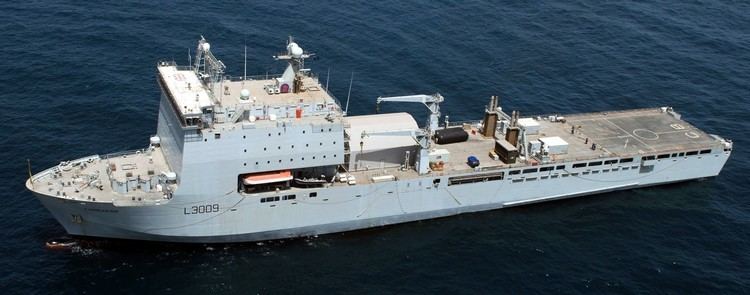
As a sealift ship, Cardigan Bay is capable of carrying up to 24 Challenger 2 tanks or 150 light trucks in 1,150 linear metres of space. The cargo capacity is equivalent of 200 tons of ammunition, or 24 twenty-foot equivalent unit containers. During normal conditions, a Bay-class ship can carry 356 soldiers, but this can be almost doubled to 700 in overload conditions. No helicopters are carried on board, but the flight deck is capable of handling helicopters up to the size of Chinooks, as well as Merlin helicopters and Osprey tiltrotor aircraft. The well dock can carry one LCU Mark 10 or two LCVPs, and two Mexeflotes can be suspended from the ship's flanks. Two 30-ton cranes are fitted between the superstructure and the flight deck.
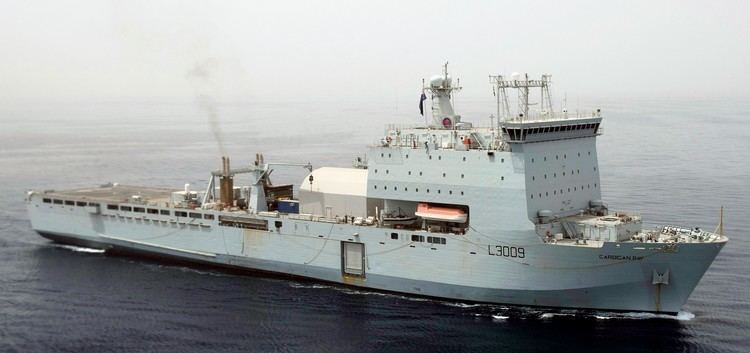
Cardigan Bay and sister ship Mounts Bay were ordered from BAE on 19 November 2001. Cardigan Bay was laid down at BAE's shipyard at Govan, Scotland on 13 October 2003. Plans to launch the ship on 8 April 2005 were frustrated by high winds and unusually low tides; the naming ceremony was carried out that day, and the actual launching took place the next day, with more favourable tide conditions. Cardigan Bay was dedicated on 18 December 2006, the third of the class to enter service with the RFA.
Operational history
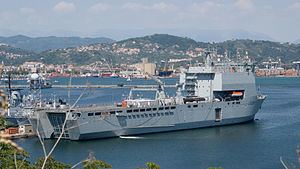
Cardigan Bay has been deployed as part of the Royal Navy Response Force Task Group, carrying elements of 40 Commando.
In June 2011, the vessel headed to Yemen to aid with the potential evacuation of British citizens affected by the ongoing unrest in Yemen. In July 2011, she docked at Berbera, and a landing craft from Cardigan Bay landed two BvS 10 Viking armoured vehicles and Royal Marines of 539 Assault Squadron in Somaliland. They penetrated several miles of "bandit country" to meet up with an important clan chief and take him back to Cardigan Bay for a meeting with MI6 and Foreign Office officials. This was part of Exercise Somaliland Cougar, an operation to train Somali coastguards in anti-piracy techniques and to establish relationships with tribal leaders.
Cardigan Bay is with the COUGAR 13 task group as of mid 2013. She is also with the 2014 IMCMEX.
